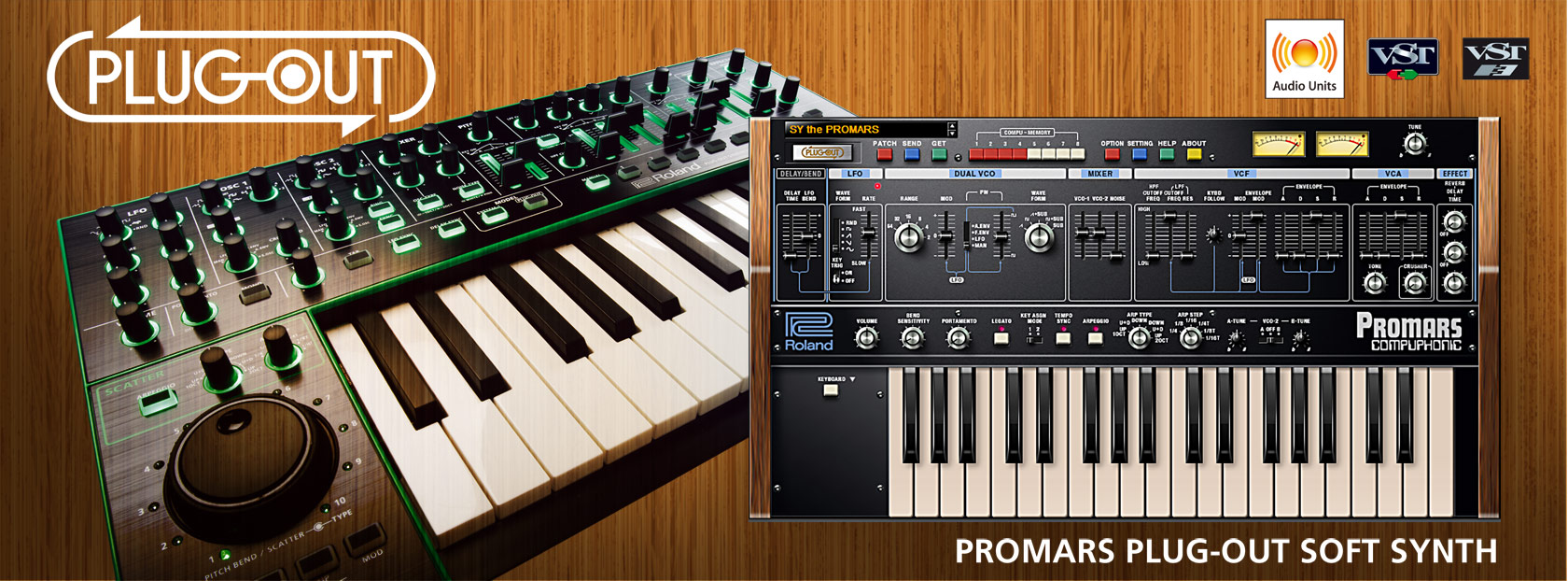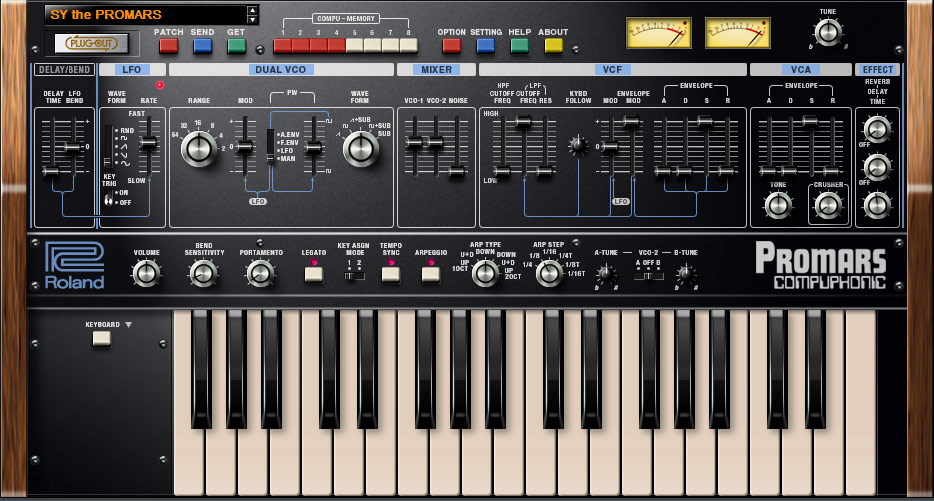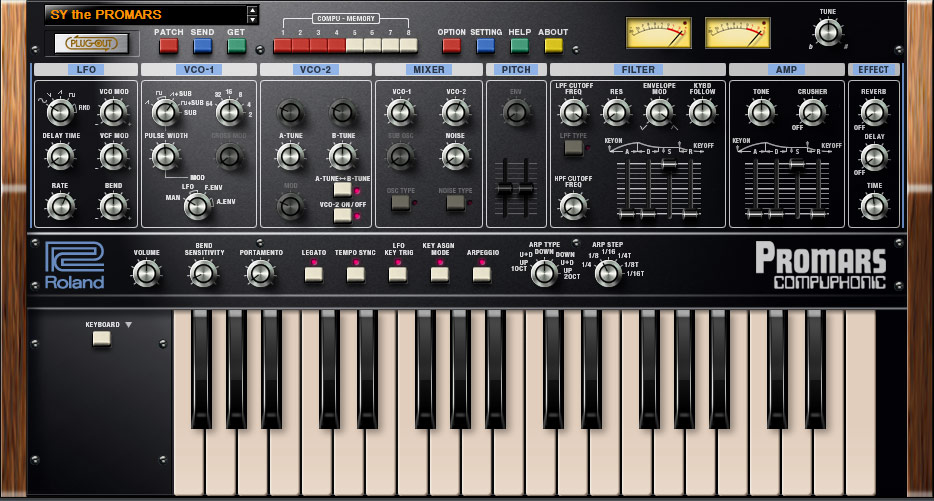- •
- •
- <
- >
Video Library
-
PROMARS Software Synthesizer plugin
Introducing the Roland PROMARS Software Synthesizer plugin – a complete reproduction of the rare and powerful PROMARS synthesizer first released in 1979.
-
Sounds of the Roland Software Synthesizer Plugins
Now you can add the classic SH-101, SH-2, PROMARS, SYSTEM-100, and new AIRA SYSTEM-1, made by Roland, to your arsenal of software instruments.
Big Little Brother
The original PROMARS was a sibling of the legendary JUPITER-4, and is often thought of as simply a monophonic version. But the PROMARS was more than that. While the JUPITER-4 had one VCO and one sub-OSC per voice, the PROMARS had two of each. The pitch of the two VCOs could be slightly detuned to produce a unison chorus effect, and a sub-OSC was provided on each VCO. Able to produce sounds similar to a four-VCO synthesizer, the PROMARS sounded positively huge , and is practically the definition of big, fat synth tone. While not as well known as the JUPITER-4, the thick sound and “compu-memory” function that allowed sounds to be stored and recalled made it a highly regarded instrument with a unique place among the classic Roland monosynths.
The New PROMARS
With the new PROMARS PLUG-OUT Synthesizer, the sound of this rare, vintage instrument is perfectly reproduced with Analog Circuit Behavior (ACB) technology. ACB faithfully captures the sound and feel of our most revered classics, using original design specs, and a detailed, part-by-part analysis of each analog circuit. While the sound and behavior is reproduced with total accuracy, we couldn't help but improve a few things in this new version. The VCOs have increased range settings, the LFO has a “Random” waveform setting, and the Noise and and Pulse Width sections have full range control of those parameters. And like our other PLUG-OUT synths, the PROMARS has great-sounding effects and an advanced arpeggiator section.
PLUG-IN and PLUG-OUT
While multiple instances of the PROMARS plug-in can be used in any VST or AU compatible DAW, the PROMARS PLUG-OUT Software Synthesizer offers seamless integration and unique capabilities for SYSTEM-1 owners. Connect a SYSTEM-1 and it becomes a dedicated controller, only lighting the appropriate knobs and sliders pertinent to the PROMARS. Transfer sounds back and forth between the PROMARS and SYSTEM-1 and even use the SYSTEM-1 as a high-quality audio and MIDI interface. Or break free entirely and PLUG-OUT directly to the SYSTEM-1, creating a stand-alone, hardware PROMARS synthesizer with real physical controls that can go anywhere and doesn’t require a computer.



